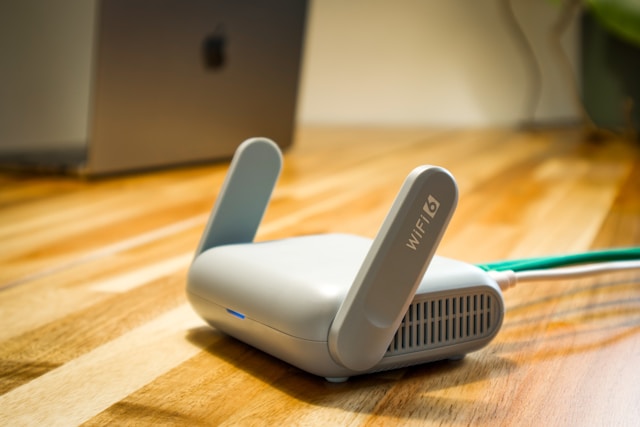In today’s connected world, a strong and reliable internet connection is as essential as electricity especially when you’re working from home, streaming your favorite shows, or managing smart home devices. But if your connection keeps dropping, streaming buffers endlessly, or parts of your home feel like dead zones, it’s time to take action.
Fortunately, there are several ways to improve Wi-Fi signal without diving too deep into technical jargon or spending a fortune. This guide covers practical and proven tips to boost home Wi-Fi, enhance signal strength, and fix slow Wi-Fi problems with minimal hassle.
Start by Checking Your Internet Plan
Before adjusting your equipment, make sure your internet plan fits your actual needs. Many people blame their router when, in fact, their plan simply doesn’t provide enough bandwidth.
-
Test your current speed using online tools like Speedtest.net or Fast.com.
-
Compare the result to the plan you’re paying for.
-
Remember: streaming, gaming, and video calls require decent download and upload speeds especially if multiple people are online at once.
If you’re consistently seeing low speeds, consider upgrading your plan or contacting your ISP to troubleshoot.
Place Your Router in the Right Spot
One of the simplest ways to fix slow Wi-Fi is to reposition your router. The location of your router plays a critical role in how effectively it transmits signals throughout your home.
Best practices for router placement:
-
Put it in a central location ideally the middle of your home.
-
Keep it off the floor and elevated (e.g., on a shelf or table).
-
Avoid placing it near metal objects, thick walls, or electronic devices like microwaves or cordless phones.
-
Try to keep it in an open space not hidden in a closet or behind a TV.
Proper placement alone can significantly improve Wi-Fi signal strength across rooms.
Reduce Interference and Network Congestion
Home Wi-Fi can be disrupted by a variety of things not just walls and distance. Many household devices and even nearby networks can interfere with your signal.
Tips to minimize interference:
-
Avoid placing your router near appliances like microwaves, Bluetooth speakers, baby monitors, and even fish tanks.
-
If you live in an apartment or a densely populated area, neighboring Wi-Fi networks may cause congestion.
-
Access your router’s admin settings and try switching to a less crowded Wi-Fi channel.
-
Use the 5GHz band for faster speeds and less interference, if your router supports dual-band operation. Reserve 2.4GHz for devices farther from the router.
These small changes can noticeably improve Wi-Fi signal quality.
Upgrade Your Router or Network Hardware
If your router is more than 3–5 years old, it might not be capable of handling modern demands. Upgrading your equipment is one of the most effective ways to improve Wi-Fi signal and overall performance.
When to consider a hardware upgrade:
-
Your router doesn’t support dual-band (2.4GHz and 5GHz).
-
You still use an old 802.11n router (consider switching to Wi-Fi 6 or at least Wi-Fi 5).
-
Devices constantly drop connection or stream quality suffers.
Other helpful upgrades:
-
Use a mesh Wi-Fi system if you have a large home or thick walls. Mesh networks use multiple nodes to extend strong coverage everywhere.
-
Consider a range extender or Wi-Fi repeater to boost signal to dead zones.
-
For desktops or gaming consoles, use Ethernet cables for faster, more stable connections.
Secure and Manage Your Network
A secure and streamlined network runs better and faster. Too many connected devices or unauthorized users can eat up your bandwidth and drag down performance.
How to manage and secure your home Wi-Fi:
-
Change the default router password to something strong and unique.
-
Enable WPA3 or WPA2 encryption in your router settings.
-
Limit the number of connected devices when possible. Disconnect gadgets not in use.
-
Reboot your router occasionally to clear its memory and refresh the connection.
Routine maintenance keeps your network clean and efficient.
Use Helpful Tools and Smart Settings
If you want to get more technical or just curious there are great tools available to analyze and optimize your Wi-Fi signal.
Useful tips and tools:
-
Download a Wi-Fi analyzer app (available on Android and Windows) to check signal strength, network congestion, and channel usage.
-
Set up a guest network to keep visitors off your main connection.
-
Schedule heavy internet use like downloads or software updates during off-peak hours.
-
Consider turning off automatic updates on non-essential devices to preserve bandwidth.
These tools give you more control over your network performance and usage.
Final Thoughts: Boosting Wi-Fi Made Easy
You don’t need to be a tech expert to improve Wi-Fi signal at home. Start by checking your internet plan, moving your router to a better spot, reducing interference, and upgrading outdated equipment. Small adjustments can lead to big improvements in speed, stability, and coverage.

